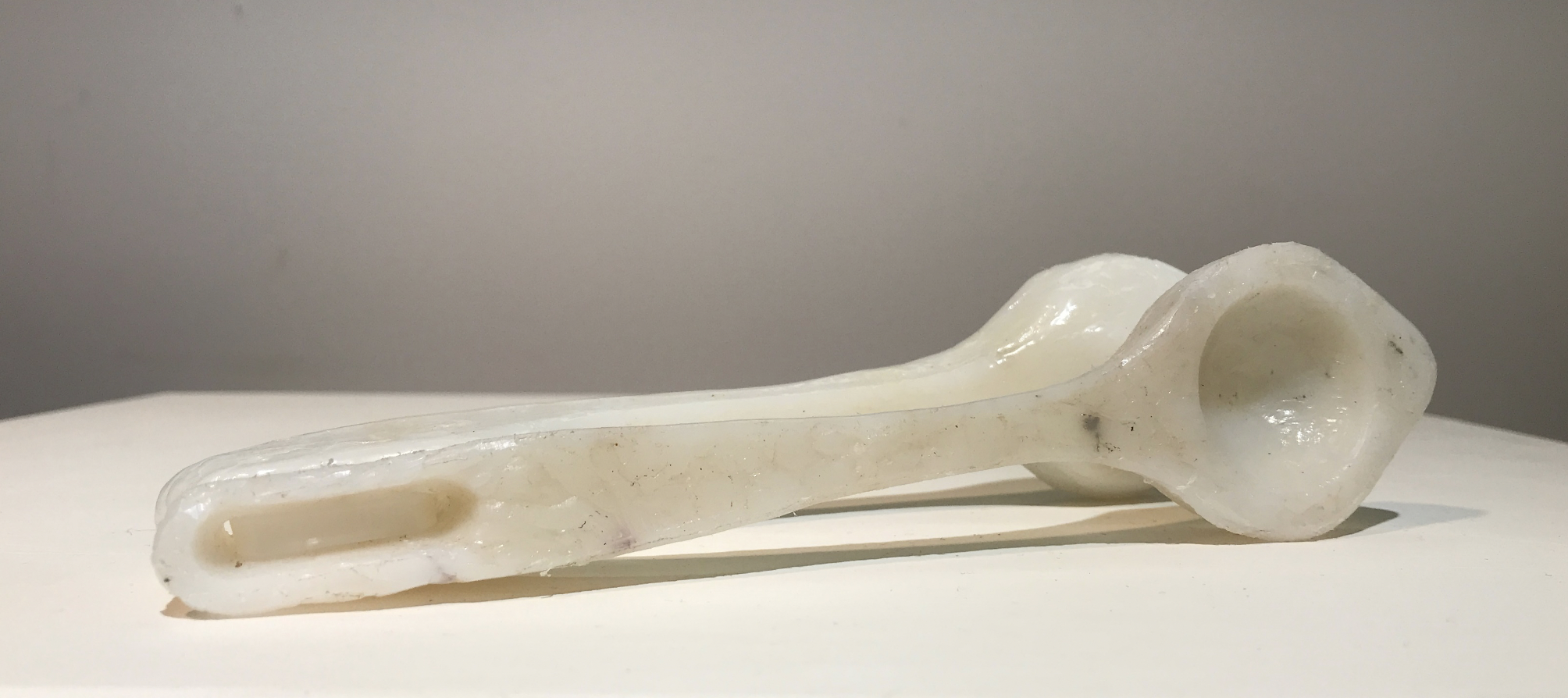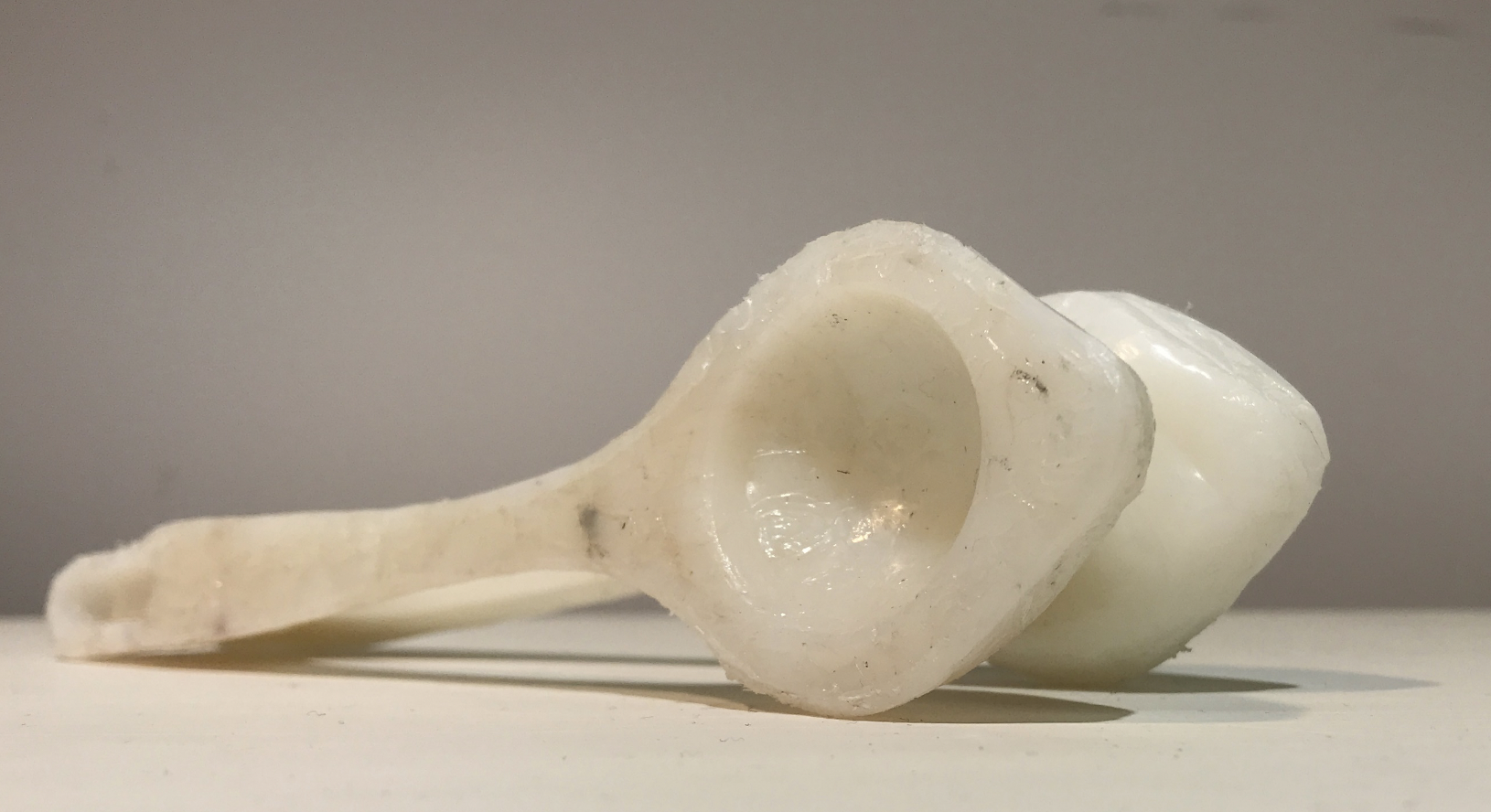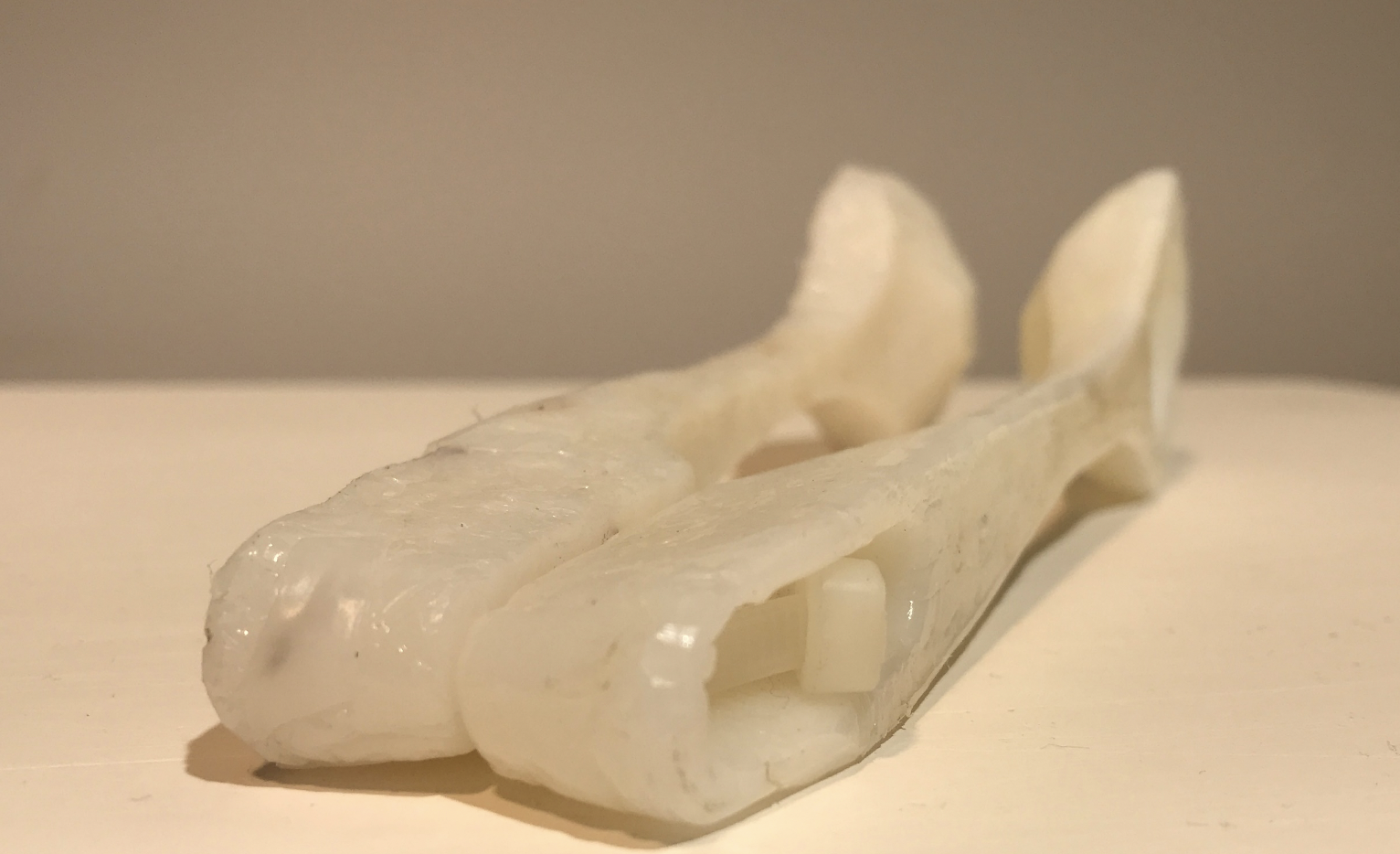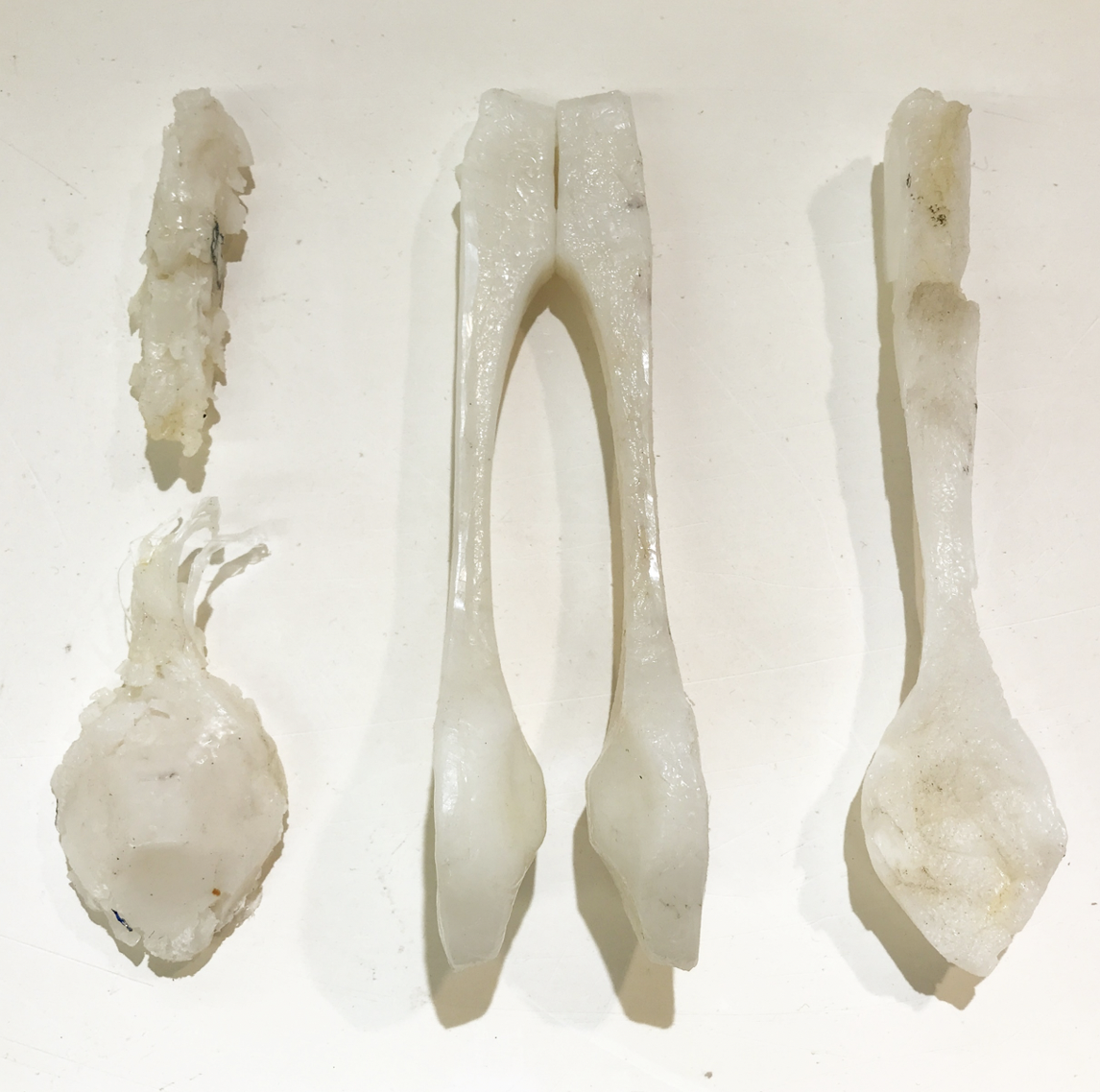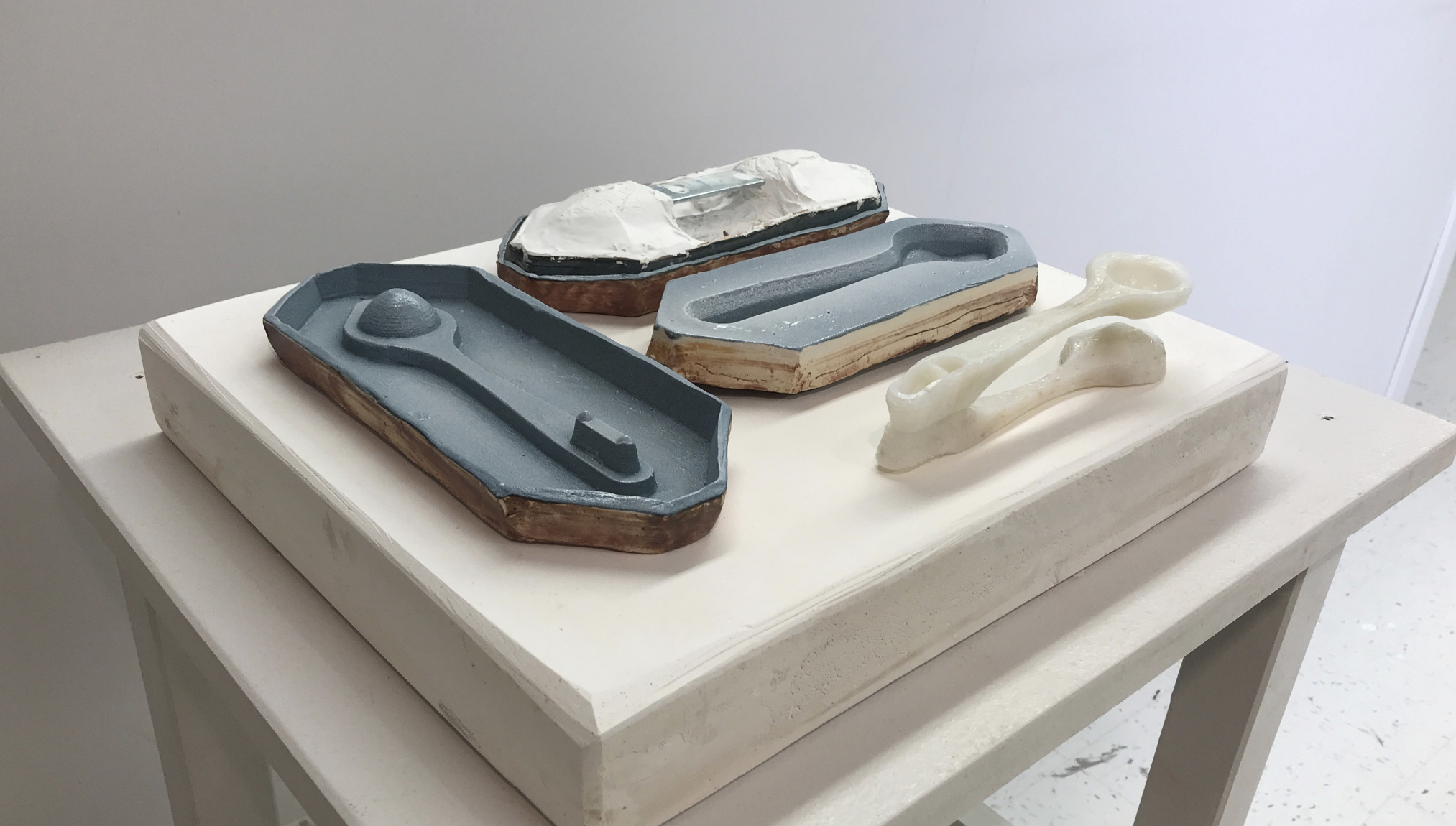Ceramic Moulds for Plastic and Musical Spoons
-
Author
Félix Beaudry
Born in Montréal, Canada, 1992
-
Dimensions
251 x 100 x 40 mm (mould)
185 x 42 x 45 mm (spoons)
-
Medium
Porcelaine, grug, glaze, iron oxide.
HDPE, zip tie.
-
Title
Ceramic Moulds for Plastic
and Musical spoon
-
Production Info
Produced by Trad & Design, Mtl
Canad, 2021, Qty: 3
-
Collections
CP3 Online Catalogue
My goal is to elaborate a path for fine arts students to create objects from recycled plastic that do not require extensive engineering knowledge. Instead I want to encourage the use of traditional methods and alternatives material.
-

The desired musical spoon was the first 3D printed in order to make a model to be used when creating the ceramic mold. You are looking at a musical spoon made of Virgin PLA plastic. It is 3d printed and non-recyclable through conventional methods.
-

A 2-part press ceramic mold was created to form plastic spoons. It was important for the mold to be designed in a way that would make it easy to open and remove the opject
-

The mold has the Cottle system using the 3D printed model, so you can still see the texture and layers of the model itself. Having a weaker print is preferable, in order to ensure the mold does not get stick together. Also smoothing the model would have helped reduce the lines
-

Using the previous mold as an outline, a ceramic mold was made from clay. I manage to make 3 molds and I let them dry completely before the next steps.
-

The molding technic created deep crevasses in some areas. To reduce the impact of these crevasses I fill the crevasses with blue-green cone 6 engobe and a tiny brush. Then I coated the rest of the inside of the molds with two coats making sure it is really dry in between coats.
-

After bisque fire I sprayed a clear glaze cone 6 to 9 over the green engobe. I was not sure how much I should put but I stop praying when I see small bumps accumulate. I washed the underside of the molds with iron oxide to complement the harsh texture. I'm hoping for an interesting contrast with the smooth green inside.
Here you can see the front and back sides of the mold. The mold has homogenous bumps all over and any crevasses are filled. The transition between the two finishes is clean and the contrast between the green engobe and the red oxide is as I envisioned.
Test 1
Test 2
The Final Product
